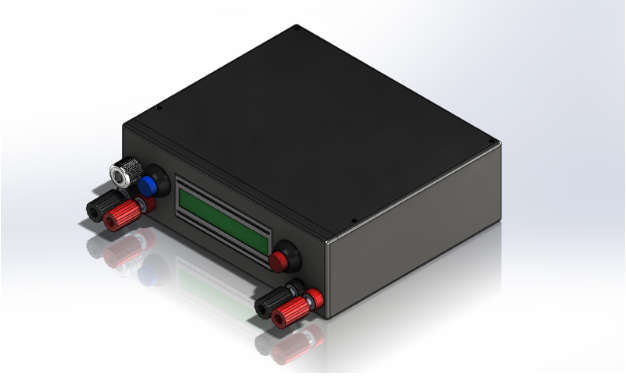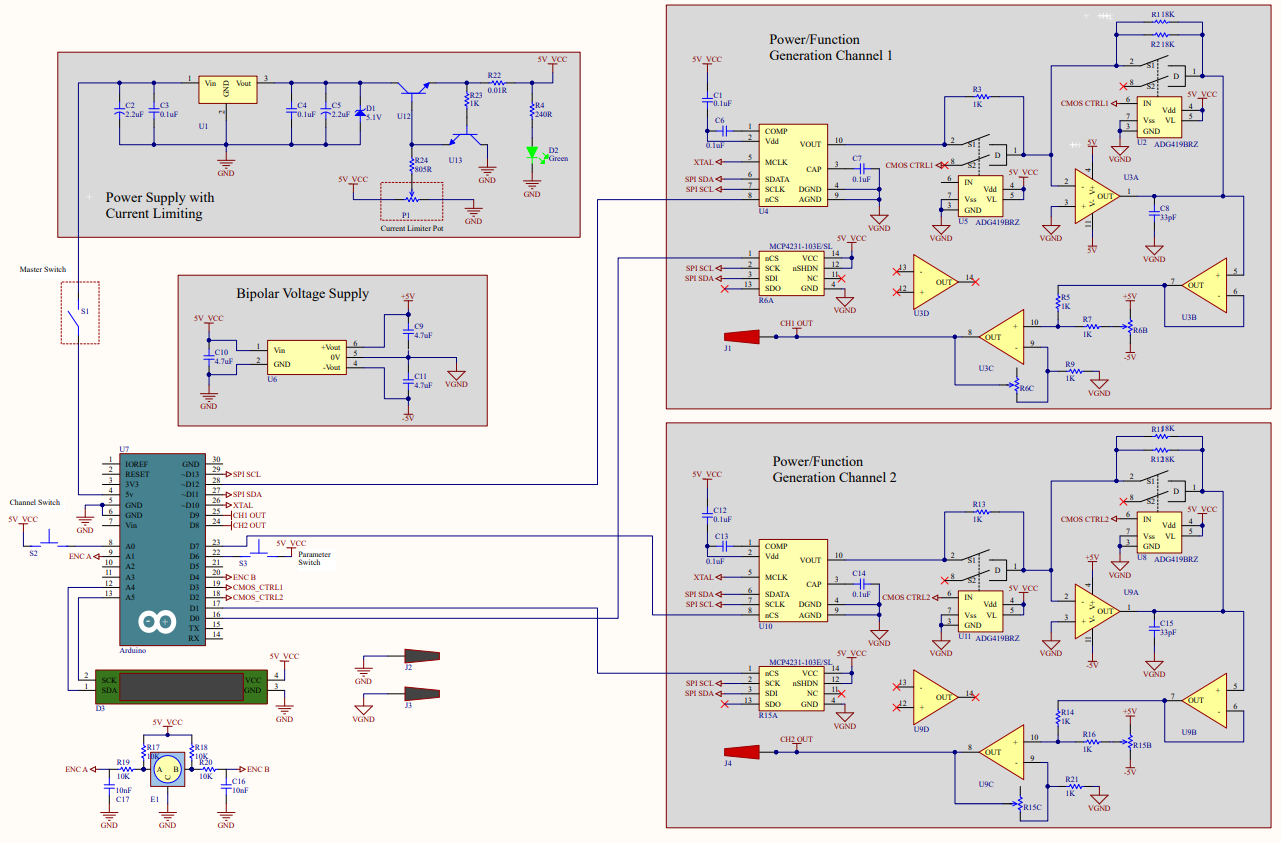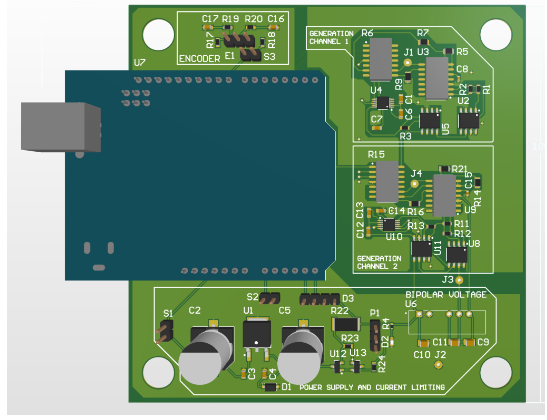
SFU Engineering Competition 2021

In the 2021 edition of this competition, a shift to remote work was implemented to prioritize the safety of participants amidst the COVID-19 pandemic. This transition brought forth intriguing elements that influenced the dynamics of the competition. In my team's case, we had to adapt to remote collaboration, navigating the challenge over a span of three days.
Our primary objective revolved around devising an electrical, mechanical, and software design for a 2-channel function generator and power supply, operating within the voltage range of -5V to 5V and powered through a USB connection to a computer. As one can imagine, this undertaking posed a significant challenge, given the limited timeframe available for completion.
Main Features
- The device should be as safe as possible (e.g. current limiting circuit should be included in the design).
- the device should be entirely powered through a standard USB connection (500 mA).
- User Interface:
- Hardware Interface - control via knobs, buttons, LEDs, LCD
- Sofware interface - control via UART-over-USB and a serial terminal
- The user should be able to:
- Control the DC voltage output
- Choose, and control different signal patterns (Square, Sine, Triangle)
- The case design should be small, Aesthetically pleasing and 3D printable
Bonus Features
- The voltage output of the DC supply can range between a positive and negative voltage rail (e.g. the supply can power an op-amp with -5V to 5V simultaneously).
- The Voltage output of the function generator can range between positive and negative voltage.
Allowed
- Use of the Proteus 8 (remote access available on the SFU MSE Labs Computers) to simulate the circuit and the embedded ARDUINO code.
- Other CAD and ECAD tools are allowed to design the case, PCB, etc.
- Simulation of passive and active low-current electronic components.
Not Allowed
- Transformers, or any other A.C. power
- Any physical implementation is not allowed, only design documents and simulation are required
Our initial hour was dedicated to a collaborative brainstorming session, during which we leveraged each other's ideas to generate innovative design concepts. Following a structured approach, we began by documenting our design requirements, including factors such as frequency range and maximum current. Once we had a clear vision of our objectives, we swiftly divided our team to focus on the mechanical, electrical, and software components of the design, ensuring efficient progress across all areas. I took over the mechanical and helped with circuit design. I identified important requirements:
- making a simple, easy-to-use, and easy to assemble-with the shelf components
- electronics should be safe, shielded and reliable
Circuits were split into 3 main circuits:
- Signal Generation Circuit
- Integrating OpAmp with LM324
- AD9833 IC over SPI
- Software-generated waveforms with PWM
- Power Supply with Current Limiting Circuit
- BJT + variable resistor
- OpAmp + Divider to generate virtual -5v and +5v
- Power supplies with built-in current limiting
- Bipolar Voltage Supply using a DC/DC
- Use a DC/DC to generate -5V and +5V

An Arduino shield was developed to make it easily implementable.


Serial Communication Protocol was set as follows:
Standardization to allow the use of software with other DIY projects
Simple and documented protocol
Simple Data JSON Format

Despite the initial perception of having a generous three-day timeframe, time swiftly passed by as we remained engrossed in our work throughout. Working against the relentless ticking of the clock induced a certain level of stress, yet we rallied together, constantly motivating and uplifting one another. Surprisingly, this experience turned out to be immensely enjoyable, offering valuable lessons that enriched our knowledge. Effective time management emerged as a pivotal factor, and our ability to maintain open communication despite the remote setup proved advantageous. Fortunately, our efforts paid off, as we secured the coveted first place. All in all, it was an extraordinary weekend that served as a delightful reminder of the immense satisfaction derived from being engineers.